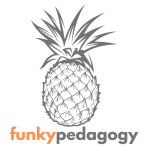This is an extract from The Metacognition Handbook, which is available on Amazon here.
I have found that one of the greatest challenges in leading teaching and learning is the tendency we have in schools to grab hold of the immediate, easy thing. It is easy to say: here is a checklist of things you must do in the classroom – these are the ingredients of a good lesson. Easy. But not effective in the long term. It isn’t enabling teachers to develop, doesn’t recognise the critical differences between subject disciplines, and is often too focused on ‘initiatives’ and ‘activities’ without really engaging with the long term complexity of the learning process.
There is nothing wrong with encouraging teachers to plan effective activities in their lessons, but our focus should be less on individual tasks, and more on sustained and interconnected behaviours. For example, I want staff in my school to use metacognitive strategies effectively. If I focus on activities alone, I might show them some different ways they can ‘do’ metacognition: reflective plenary, metacognitive talk, modelling. I might say: please use these activities regularly in your lessons to develop student metacognitive skill.
This would probably work to an extent – teachers would be using pretty effective strategies, and students would likely benefit from them. What happens, though, when those activities aren’t appropriate for the type of knowledge or skill which is being taught in a particular topic? What happens when teachers need to be flexible and responsive in the classroom? I have given them some activities, but I haven’t given them the tools they need to respond in the moment to changes in student need. Their understanding of metacognition is based solely on activities, rather than on their behaviours as a teacher in the classroom and student behaviours as metacognitive learners.
We need to move from:
I’m using some metacognition in my lessons
I did some metacognition in maths
To:
‘I teach metgacognitively’
‘I learn metacognitievly’
How do you train students to be metacognitive?
There are many different structures in existence for teaching metacognition. Perhaps the most well known is ‘plan, monitor, evaluate,’ where students plan a strategy, monitor their performance during the task, and then evaluate its success. This works in a cycle, and students are able to then apply their evaluation to the planning of their next task.
This is an effective approach, but I prefer to use: comprehension – connection – strategy – reflection, based on the work of Tova Michalsky. Put simply this approach teaches students to:
- Identify what they understand about the task/topic/information (COMPREHENSION)
- Make links between this task/topic/information and things they have seen before (CONNECTION)
- Identify the best approach they can use to complete the task (STRATEGY)
- Evaluate how successful their approach was and how they felt about it (REFLECTION)
I prefer this approach because it is more closely aligned with what we know about how the brain learns.

The comprehension, connection and strategy elements of Michalsky’s approach are very much in concert with how we learn. These cognitive processes also explain to us why repetition and recall works: we strengthen neural pathways every time we engage with a piece of knowledge. This doesn’t just work for knowledge, but for behaviours, too. When you practise a skill, your neural pathways associated with that skill are strengthened and the task becomes easier. Over time, those actions might become automated and unconscious. If students are regularly practising metacognitive skills, such as making explicit connections between new and prior learning, and independently selecting strategies to succeed in tasks, these skills will eventually become second nature to them.
How do you train students to be metacognitive? It all starts with questioning.
Questioning is the most powerful tool we have in the classroom. We can pose questions to explore, to probe, to challenge, to push, to give feedback, to change direction, to test, to encourage. Our aim in metacognition is to train students to ask themselves a series of internal questions when they are working.
I use Knowledge, Regulation, Motivation to structure my questioning in the following way:


For a host of practical strategies and evidence-informed advice on metacognition, you can get The Metacognition Handbook here.
Reference:
Integrating Skills and Wills Instruction in Self-Regulated Science Text Reading for Secondary Students, Tova Michalsky, International Journal of Science Education, 2013, vol 35, no. 11, 1846-1873


